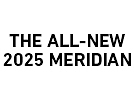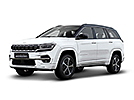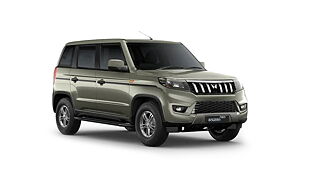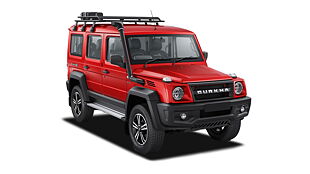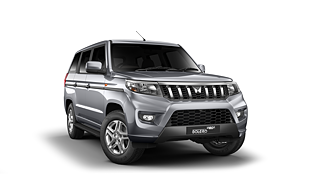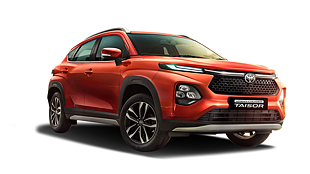Tata Sierra Std
|Rate & Win
- Sierra
- Specs & Features
- Variants
- User Reviews
discontinued
Variant
Std
City
Show price in my city
Rs. N/A
Last Recorded PriceSierra Std Specifications & Features
- Features
- Features
Features
Safety
Braking & Traction
Locks & Security
Comfort & Convenience
Mobile App Features
Seats & Upholstery
Storage
Doors, Windows, Mirrors & Wipers
Exterior
Lighting
Instrumentation
Entertainment, Information & Communication
Manufacturer Warranty
Other Sierra Variants
| Variants | Price | Specifications | |
|---|---|---|---|
Rs. N/A | Get Offers from Dealers |
Sierra Alternatives
Explore Used Tata Sierra
Tata Sierra Std Reviews
- (3 Ratings) 3 Reviews
4.3/5
- SUV of its kind, seriously.Exterior : This SUV, when launched, had a great value for money. Amazing exterior, not only cool, but tuff as well. I still own this car (1995), i got it all buffed up. changed the interios with tata safari seats, tata safari compressor for better cooling, painted, brand new 17" rims with new tyres. kept the orignal engine. Interior (Features, Space & Comfort) : Because it is a 90s car, the interior is basic, specialy when you compare to new SUVs, but still goes well with it. some people say, it is not a gud SUV bcoz of its 3 doors, but that is its uniqueness. people sitting at rear, feels so safe & secure. Ample space and comfort wise, you will never be tired, even if you drive it for hours and hours. Engine Performance, Fuel Economy and Gearbox : 1900CC engine gives good performance specially when you get 14 kmpl inside the city because it was such a heavy SUVs in its class. gearbox is very easy to operate and UNIQUE. Ride Quality & Handling : once you get into the 4th and 5th gear, you feel like you are driving on water. 😊. you feel, it is eating the road. Final Words : i am thinking of putting a turbo chagred 6 cylinder engine in it. may be a engine designed by TATA or Nissan. Areas of improvement : If TATA starts manufacturing this SUV again, with a turbo chagred engine with less body weight and includes 4*4 in it, then no doubt this car will have its impact again. Sierra Redefined. Good fuel eco., Style appericiated even these days. Gr8 Cabin Space.Timely checkup.Rating parameters(out of 5)5
Exterior
5Comfort
4Performance
5Fuel Economy
4Value For Money
About the ReviewerPurchase UsedDriven forIts my mate since agesMileage14 kmplRead MoreWas this review helpful?11 - Wonder why Tata stopped making itExterior Great looks, Built to last with heavy steel including bumpers, Unique 3 door SUV Interior (Features, Space & Comfort) Very spacious, More than enough leg room even for the tallest people, Boot space easily more than any other car, Pleasant dashboard panel, Steering Tilt helpful for drivers of different heights, Powerful AC, Great Power Steering, Power Windows, Central locking Engine Performance, Fuel Economy and Gearbox 14+ kms per liter in city, Good timely maintainance will ensure a reliable engine Ride Quality & Handling Very good Coil spring suspension. Feels like it is floating on a boat sometimes. The drive never feels tiring as i have seen in continious drives of even 8 to 10 hours Final Words Great Car in its class. Tata Motors, please start making it again. I own a 97 model and thoroughly enjoying the drives both in city & highway. Very spacious, More than enough leg room even for the tallest people, Boot space easily more than any other car, Pleasant dashboard panel, Steering Tilt helpful for drivers of different heights, Powerful AC, Great Power Steering, Power Windows, Central locking Areas of improvement Have a 4 wheel drive variant for offroading capabilitis Good Fuel Economy for its weight, Very sturdy & strong build, Good stability at high speedsInitial pickup slow till it gains speedRating parameters(out of 5)5
Exterior
5Comfort
5Performance
5Fuel Economy
5Value For Money
About the ReviewerPurchase UsedDriven forFew thousand kilometersMileage14 kmplRead MoreWas this review helpful?80 - Solid and niceAlthough knowing the sierra is out of production i purchased this vehicle. Initial responses form near and dear ones "why this vehicle!!"? WHY DID I BUY SIERRA? Well i purchased it for my own reasons (limited budget inclusive). I wanted to buy a car 1.which has good personality 2.which is comfortable3.which is Good for long distances4.which is easy for some modification5.Which i can move around in style and still not look heppy and jazzy6.Which will suit me I am 93 Kgs and 5.10 tall7.Not expensive on maintenanceYes Sierra suits all the Expectations perfectly.ABOUT MY SIERRAI should be Lucky to buy this sierra, It was owned by a friend of mine. He had maintained in really good condition.Type: Standard (Non-turbo)Diet: Ordinary diesel + System DNutrient: Castrol CRB+ or Shell RIMULA "D" type 15W40 oil.Supplement: WRUTH Engine flush ( used at oil change )The feelings felt after buying my SierraDay 1:Slightly disheartened about near and dear ones comments.Day 2:Took the car for a drive within my area. This is my first car and the first time I am driving a big vehicle.Day 3:Familiarized with the Electrical fuses and the various oil levels in the engine bay.Day 4:Went out for a long drive, took the Chennai by-pass and once in the open road the feeling i got driving was really great i was doing about 75kmph. Suspension is great. Got that floating feel.Day 5:Confidence level up by 200%, morale boosted up by 500%.Day 6:Took the car inside peak hour traffic. Power steering is a blessing. Maneuvering this mammoth is not difficult as it seems.From Day 7....Till date there is no turning back or regrets......Now my sierra has become an extended part of me.I feel at home behind the wheel rather than actually sitting at home and watching the tube.Some Maintenance tips i would like to give in my experience...These are purely my personal suggestions / experiences i have undergone...( These are what i am following till date please correct me if I am making a mistake somewhere)1. Maintain correct tyre pressure -i maintain 33 psi2.Wheel alignment checking every 5000 kms or whenever any suspension / wheel bearing related work is done in the vehicle.3.Tyre rotation every 5000 kms.4.Battery check every 2500 kms.5.Oil change every 5000 kms.6.Diesel, oil, air filter changes every 5000 kms.7.Underbody water wash ,all grease points greased and suspension related and other bushes in underbody oil sprayed every 1500kms.8.I regularly use SYSTEM-D with diesel @ 1ml per liter of diesel.9Please attend to any minor rattling/squeaking sounds immediately.10.Please maintain the chassis in very good condition any tinkering needed if done immediately and properly will save you a lot of trouble and money.(I have seen some sierras with holes on the running board or worse holes on the lower side of the doors too) if you ask him about maintenance he will definitely say it is costly to maintain a sierra b'cos the tinkerer would have given him a higher quote considering the condition of the vehicle.(it is the steel thats is costly not the maintenance boss!)11.Some electrical problems will arise -- Mainly the relays will create a problem ..rationally thinking considering the age of the car the relay must have lived its life and needs a replacement but some electrical mechanics will try to repair it and use it --please change any blown relay or fuses.11.aIn Chennai i see quite a lot of sierras in local garages (rather than TATA authorized service station) i too maintain my vehicle with my local garage guy. What i have noticed is that the electricians have the habit of winding a piece of wire on the blown fuse ( the amperage the "new" wire can sustain is much larger than the original in the fuse )So now the fuse does not blows, but the part associated to it blows / gets burnt.---Please insist your electrician to fix only new fuses. Better carry a few of 20 Amps rated in your glove box.now again the maintenance will seem higher because the electrical part is costlier than the proper amps rated fuse.11.b I get the fuse box and carriers in my sierra cleaned and wiring checked every 6 months. I had experienced molten fuses stuck to the fuse box permanently.12.Spares are not at all a problem guys believe me . I know a guy who rebuilt his sierra from scrap and it is in showroom condition now. ALL SPARES are AVAILABLE. COMMENTSI feel that ride quality and comfort is far better than most vehicles in it's class, though its not as quick when compared to current gen diesel engines but i feel that the vehicle has enough power and pep for comfortable journeys. With proper regular maintenance this car will be your best friend. The interiors are bland not a bit exciting though.Sierra had come in the scene way before india was ready for it.No other vehicle at tat time has power steering/Pow windows/Air con as standard fitment.the 3 door style was way ahead its time and we did not accept it so the common/family man thought its not for him and never bought it.This great mammoth never went into the good books of the common masses SO it was considered a flop/failure model.BOTTOM LINE: A GREAT SUV KILLED BEFORE IT COULD MAKE ITS GRAND DEBUT. very comfortable, looks ,awesome road presence , fuel economy (14kmpl) , tireless long journeys ,dashboard plastics cheap quality , power drop with a/c , some rattling noises , out of production .Rating parameters(out of 5)5
Exterior
5Comfort
4Performance
4Fuel Economy
3Value For Money
About the ReviewerPurchase UsedDriven forRead MoreWas this review helpful?371

